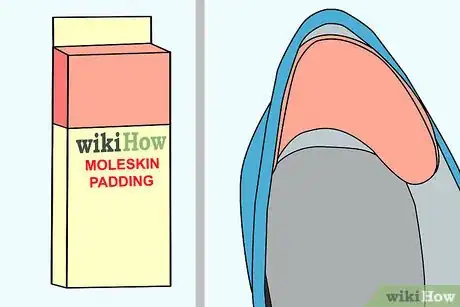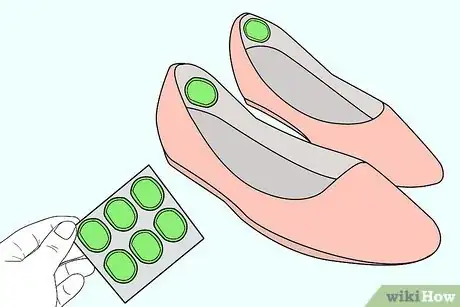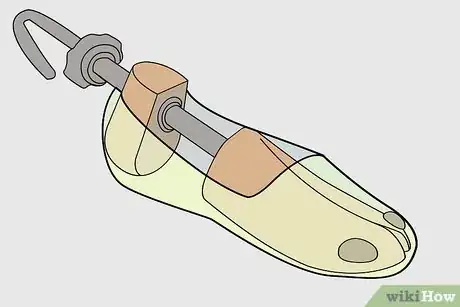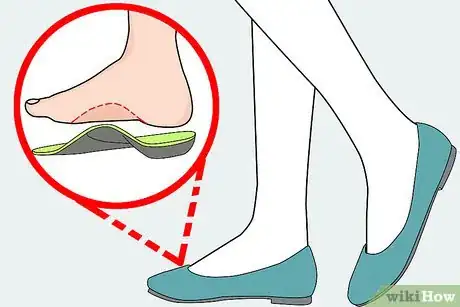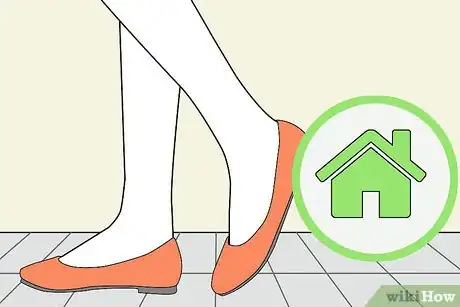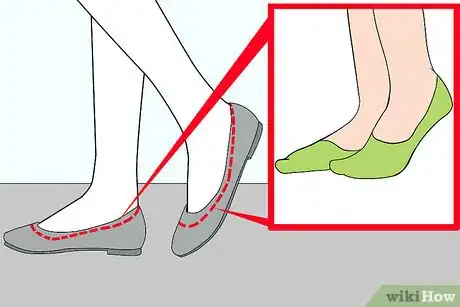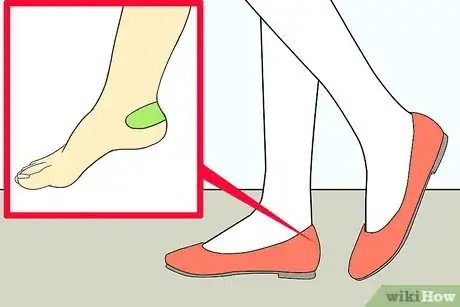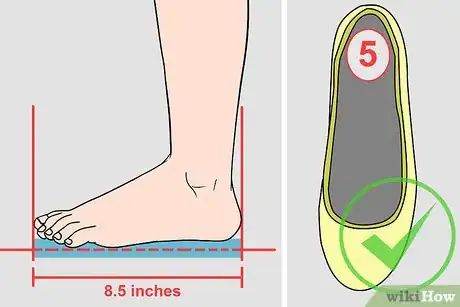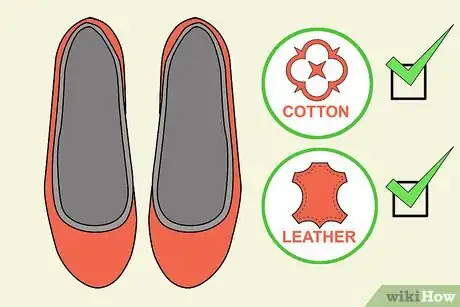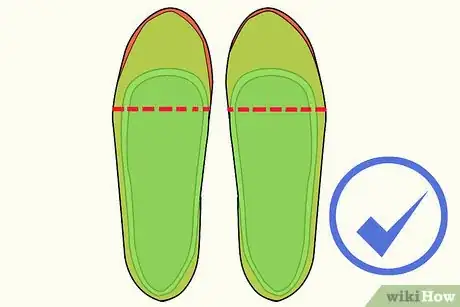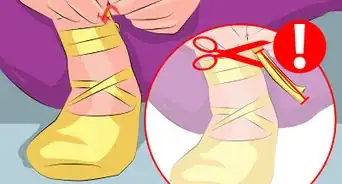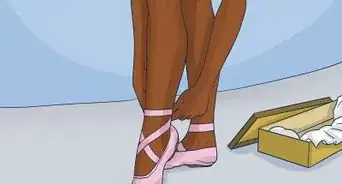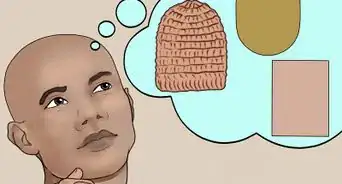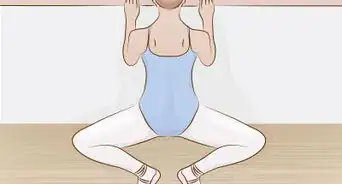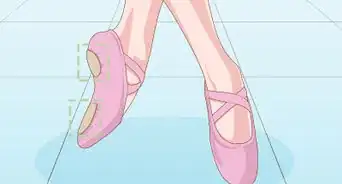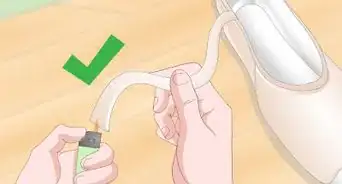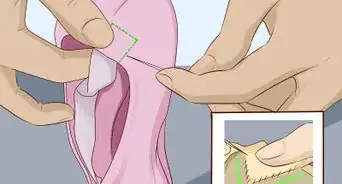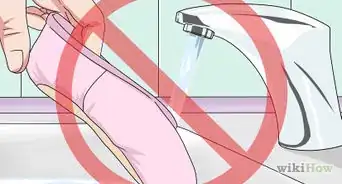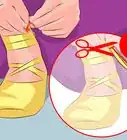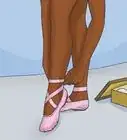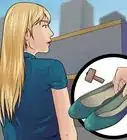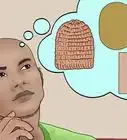This article was co-authored by Geraldine Grace Johns. Geraldine Grace Johns is a Professional Ballerina and the Owner of Grace Ballet in New York and Los Angeles. Geraldine toured through New Zealand, Australia, Japan, and Korea as Jammes in Ken Hill's Original Phantom of the Opera. She has studied with the Royal Academy of Dance in London to become a teacher and taught for the Kudo School of Ballet in Yokohama. Geraldine also ran her own Royal Academy of Dance School in New Zealand before studying at the Neighborhood Playhouse School of the Theatre in New York City. Geraldine was a guest coach and Master Class teacher in Toronto for the Canadian Royal Academy of Dance's Dance Challenge in 2018, 2019, and 2020. She was also a guest coach and Master Class teacher for the USA Royal Academy of Dance Challenge in Long Beach, California in 2019 and 2020. Grace Ballet Los Angeles has won recognition as one of 13 Best Ballet Schools in Los Angeles since opening her school. Geraldine is a contract Practical Teaching Supervisor for the Certificate in Ballet Teaching Studies for the Royal Academy of Dance.
This article has been viewed 44,536 times.
Ballet flats are super versatile shoes that you can dress up or down and wear all over town. The problem is, some ballet flats can really hurt your feet. Making some small adjustments to your shoes can make them more comfortable. You can also take care of your feet to make sure they’re as comfortable as possible in your new shoes. Getting good quality, well fitting shoes ballet flats is also essential to making sure they don’t hurt your feet.
Steps
Altering Your Shoes
-
1Add moleskin to your shoes. Because of their design, some ballet flats will dig into the sides of your feet. Cut a piece of moleskin padding to fit the area of the shoe that gives you the most problems. Pull off the protective backing and stick the moleskin, sticky side down, directly to your shoe. This should give you some extra padding and make the shoe more comfortable.
- You can pick up moleskin padding from most drug stores.
-
2Use gel dots for serious rubbing. If your flats rub against a specific area of your foot constantly, try adding a gel dot to the shoe. Take the protective backing off the back of the dot and stick it adhesive side down on the problematic area of your shoes. These give you a bit more cushion than other products, and should give your feet some relief.
- You can find gel dots at most drug stores.
Advertisement -
3Use a wooden shoe stretcher for shoes that are too tight. If you run into the problem that you’re between sizes on ballet flats, get the smaller size. Then use a wooden shoe stretcher to stretch the shoe out a bit. It gives you a perfect fit and also prevents the shoe from rubbing on the sides of your feet.
-
4Use slim fit insoles if your heels hurt. Most ballet flats don’t have a lot of support for your arch or heel. Slim fit insoles will give you some much-needed arch support without changing the way your shoes fit. Simply slip it inside your shoe and press down on the insole so the adhesive connects to the shoe.
- Slim fit insoles are available at most drug and medical supply stores.
-
5Wear your shoes at home to break them in. Before you throw on your brand new ballet flats and wear them all over town, break them in at home first. Wear them inside only for a few days so your feet can get used to them.[1]
Taking Care of Your Feet
-
1Take care of your skin to prevent calluses. You might think that have calluses on your feet will protect them against chafing in a ballet flat, but they can actually cause more harm to your feet. Make sure you moisturize your feet and use a pumice stone to remove any calluses. Soft, supple skin will feel better in ballet flats.[2]
-
2Wear no-show liner socks to protecting your feet. These socks will give your foot some protection against the shoe, preventing blistering or rubbing. No-show liner socks will give you this protection without the sock showing over the edge of your ballet flat.[3]
- Socks that are a combination of cotton and acrylic are the best for these types of socks because cotton will absorb any moisture and the acrylic acts as a wicking material.
-
3Try a friction block stick if you don’t wear socks with your flats. A friction block stick looks like a small tube of deodorant, but its designed to be applied directly to your foot. It reduces the amount of friction between your foot and your flat, reducing blisters if you don’t wear socks.
- You can find friction block sticks at most drug stores.
-
4Protect your feet against blisters by using blister pads. They’re designed to go directly onto your feet and act as a barrier between your foot and your shoe. If you’re wearing ballet flats, it’s best to wear the blister pads on your heels, where blisters are likely to form.[4]
- You can find blister pads in most drug stores.
Choosing the Right Shoes
-
1Visit your doctor. If you have any existing bone, tendon or muscle problems, you may need certain shoes.
-
2Make sure you’re wearing the correct size. Measure the bottom of your foot from the back of your heel to the end of your longest toe. If that length is 8.5 inches (21.5 cm), you’re a size 5. For every quarter of an inch (.63 cm) after 8.5 inches, add another half size. Your flat should be tight enough that it doesn’t flip when you walk, but loose enough that it’s not cutting in on the side.[5]
-
3Choose quality materials for your flats. Leather, cotton, patent leather, and suede are all good quality materials that are also comfortable. Flats made from these materials will tend to stretch to match the shape of your feet and should be the most comfortable.[6]
- Avoid ballet flats made from any kind of plastic material – they tend to fall apart and be the least comfortable.
-
4Test the flexibility of the shoe. A good, comfortable ballet flat should only be bendable from the middle of the shoe to the toe. If you can bend the entire shoe, including the heel, they won’t have enough support for your feet.[7]
-
5Check the width of the sole. The sole of your ballet flat is where all of the support for your foot will come from. When you choose a ballet flat, take a look inside – the sole should be wide enough that your entire foot is supported. Otherwise, your foot will only have the support of the material of the sides of your shoe, which can lead to foot pain.[8]
Expert Q&A
-
QuestionIs it normal for ballet flats to hurt my feet?
 Geraldine Grace JohnsGeraldine Grace Johns is a Professional Ballerina and the Owner of Grace Ballet in New York and Los Angeles. Geraldine toured through New Zealand, Australia, Japan, and Korea as Jammes in Ken Hill's Original Phantom of the Opera. She has studied with the Royal Academy of Dance in London to become a teacher and taught for the Kudo School of Ballet in Yokohama. Geraldine also ran her own Royal Academy of Dance School in New Zealand before studying at the Neighborhood Playhouse School of the Theatre in New York City. Geraldine was a guest coach and Master Class teacher in Toronto for the Canadian Royal Academy of Dance's Dance Challenge in 2018, 2019, and 2020. She was also a guest coach and Master Class teacher for the USA Royal Academy of Dance Challenge in Long Beach, California in 2019 and 2020. Grace Ballet Los Angeles has won recognition as one of 13 Best Ballet Schools in Los Angeles since opening her school. Geraldine is a contract Practical Teaching Supervisor for the Certificate in Ballet Teaching Studies for the Royal Academy of Dance.
Geraldine Grace JohnsGeraldine Grace Johns is a Professional Ballerina and the Owner of Grace Ballet in New York and Los Angeles. Geraldine toured through New Zealand, Australia, Japan, and Korea as Jammes in Ken Hill's Original Phantom of the Opera. She has studied with the Royal Academy of Dance in London to become a teacher and taught for the Kudo School of Ballet in Yokohama. Geraldine also ran her own Royal Academy of Dance School in New Zealand before studying at the Neighborhood Playhouse School of the Theatre in New York City. Geraldine was a guest coach and Master Class teacher in Toronto for the Canadian Royal Academy of Dance's Dance Challenge in 2018, 2019, and 2020. She was also a guest coach and Master Class teacher for the USA Royal Academy of Dance Challenge in Long Beach, California in 2019 and 2020. Grace Ballet Los Angeles has won recognition as one of 13 Best Ballet Schools in Los Angeles since opening her school. Geraldine is a contract Practical Teaching Supervisor for the Certificate in Ballet Teaching Studies for the Royal Academy of Dance.
Professional Ballerina & Ballet Instructor Ballet flats should not be painful! Visit your local dance store that carries a wide range of ballet shoe brands and sizes. Try on different widths and styles with a specialized store person who can suggest the best fit for your foot type.
Ballet flats should not be painful! Visit your local dance store that carries a wide range of ballet shoe brands and sizes. Try on different widths and styles with a specialized store person who can suggest the best fit for your foot type. -
QuestionHow should I order my first pair of ballet shoes?
 Geraldine Grace JohnsGeraldine Grace Johns is a Professional Ballerina and the Owner of Grace Ballet in New York and Los Angeles. Geraldine toured through New Zealand, Australia, Japan, and Korea as Jammes in Ken Hill's Original Phantom of the Opera. She has studied with the Royal Academy of Dance in London to become a teacher and taught for the Kudo School of Ballet in Yokohama. Geraldine also ran her own Royal Academy of Dance School in New Zealand before studying at the Neighborhood Playhouse School of the Theatre in New York City. Geraldine was a guest coach and Master Class teacher in Toronto for the Canadian Royal Academy of Dance's Dance Challenge in 2018, 2019, and 2020. She was also a guest coach and Master Class teacher for the USA Royal Academy of Dance Challenge in Long Beach, California in 2019 and 2020. Grace Ballet Los Angeles has won recognition as one of 13 Best Ballet Schools in Los Angeles since opening her school. Geraldine is a contract Practical Teaching Supervisor for the Certificate in Ballet Teaching Studies for the Royal Academy of Dance.
Geraldine Grace JohnsGeraldine Grace Johns is a Professional Ballerina and the Owner of Grace Ballet in New York and Los Angeles. Geraldine toured through New Zealand, Australia, Japan, and Korea as Jammes in Ken Hill's Original Phantom of the Opera. She has studied with the Royal Academy of Dance in London to become a teacher and taught for the Kudo School of Ballet in Yokohama. Geraldine also ran her own Royal Academy of Dance School in New Zealand before studying at the Neighborhood Playhouse School of the Theatre in New York City. Geraldine was a guest coach and Master Class teacher in Toronto for the Canadian Royal Academy of Dance's Dance Challenge in 2018, 2019, and 2020. She was also a guest coach and Master Class teacher for the USA Royal Academy of Dance Challenge in Long Beach, California in 2019 and 2020. Grace Ballet Los Angeles has won recognition as one of 13 Best Ballet Schools in Los Angeles since opening her school. Geraldine is a contract Practical Teaching Supervisor for the Certificate in Ballet Teaching Studies for the Royal Academy of Dance.
Professional Ballerina & Ballet Instructor Do not order your first pair of ballet shoes online. Instead, enjoy the wonderful experience of getting them fitted by a professional.
Do not order your first pair of ballet shoes online. Instead, enjoy the wonderful experience of getting them fitted by a professional.
References
- ↑ https://www.today.com/style/new-shoes-blues-5-easy-ways-keep-your-feet-blister-t34821
- ↑ https://www.today.com/style/new-shoes-blues-5-easy-ways-keep-your-feet-blister-t34821
- ↑ https://www.today.com/style/new-shoes-blues-5-easy-ways-keep-your-feet-blister-t34821
- ↑ https://www.today.com/style/new-shoes-blues-5-easy-ways-keep-your-feet-blister-t34821
- ↑ https://www.today.com/style/new-shoes-blues-5-easy-ways-keep-your-feet-blister-t34821
- ↑ http://www.ebay.com/gds/Your-Guide-to-Buying-Womens-Flats-/10000000177632323/g.html
- ↑ http://dancetimepublications.com/dance-culture-editorial/3-tips-to-finding-the-perfect-ballet-flat/
- ↑ http://dancetimepublications.com/dance-culture-editorial/3-tips-to-finding-the-perfect-ballet-flat/
About This Article
Sometimes ballet flats can really hurt your feet, but there are some minor adjustments you can make so your flats feel as comfortable as possible. One thing you can try is cutting a piece of moleskin padding to fit inside of your flats where they scrape against your foot, which will help reduce friction. If there’s a specific spot where your flats constantly rub against your foot, try sticking a gel dot, or cushioned adhesive padding, over it. You can also slide slim fit insoles into the bottom of the flats to add support for your arch and heel. If the flats are too tight, use a wooden shoe stretcher to stretch them out a bit so they don’t rub the sides of your feet. If you end up with any blisters on your heels, just put some blister pads over them while they heal so your flats don't rub against them. For tips about how to break in new ballet flats, keep reading!
